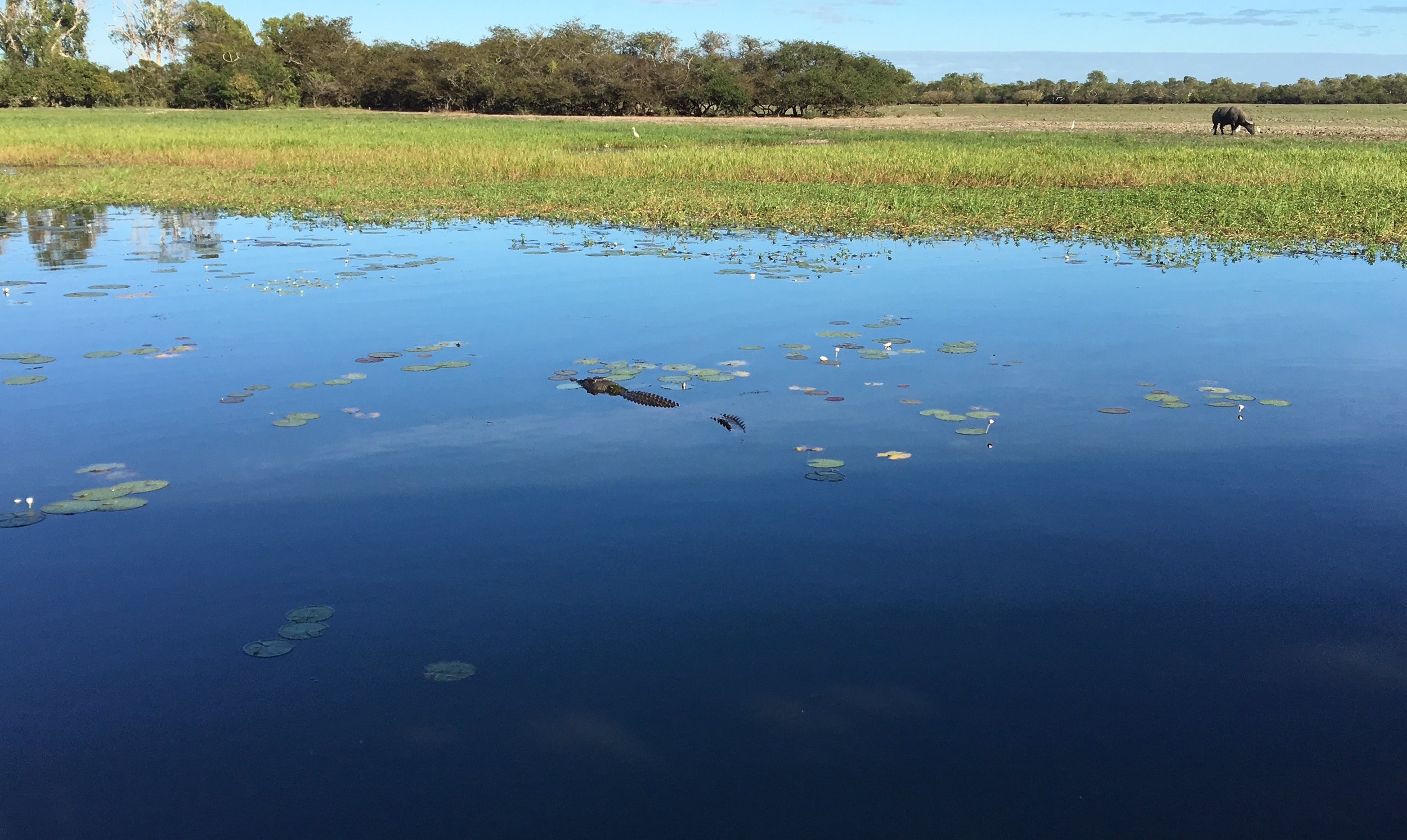Sailing Whitsunday Islands without a sailing license
What you will experience
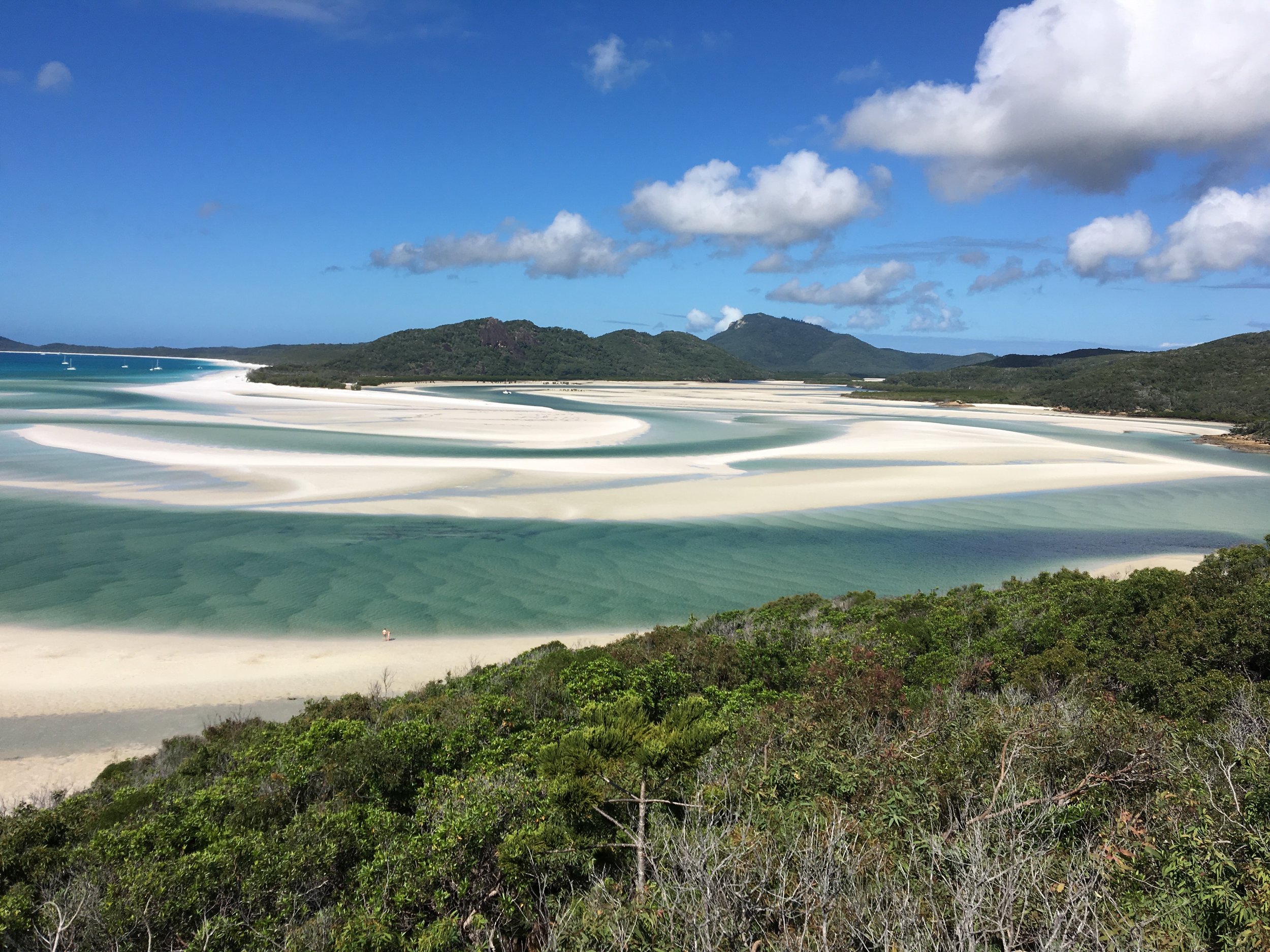
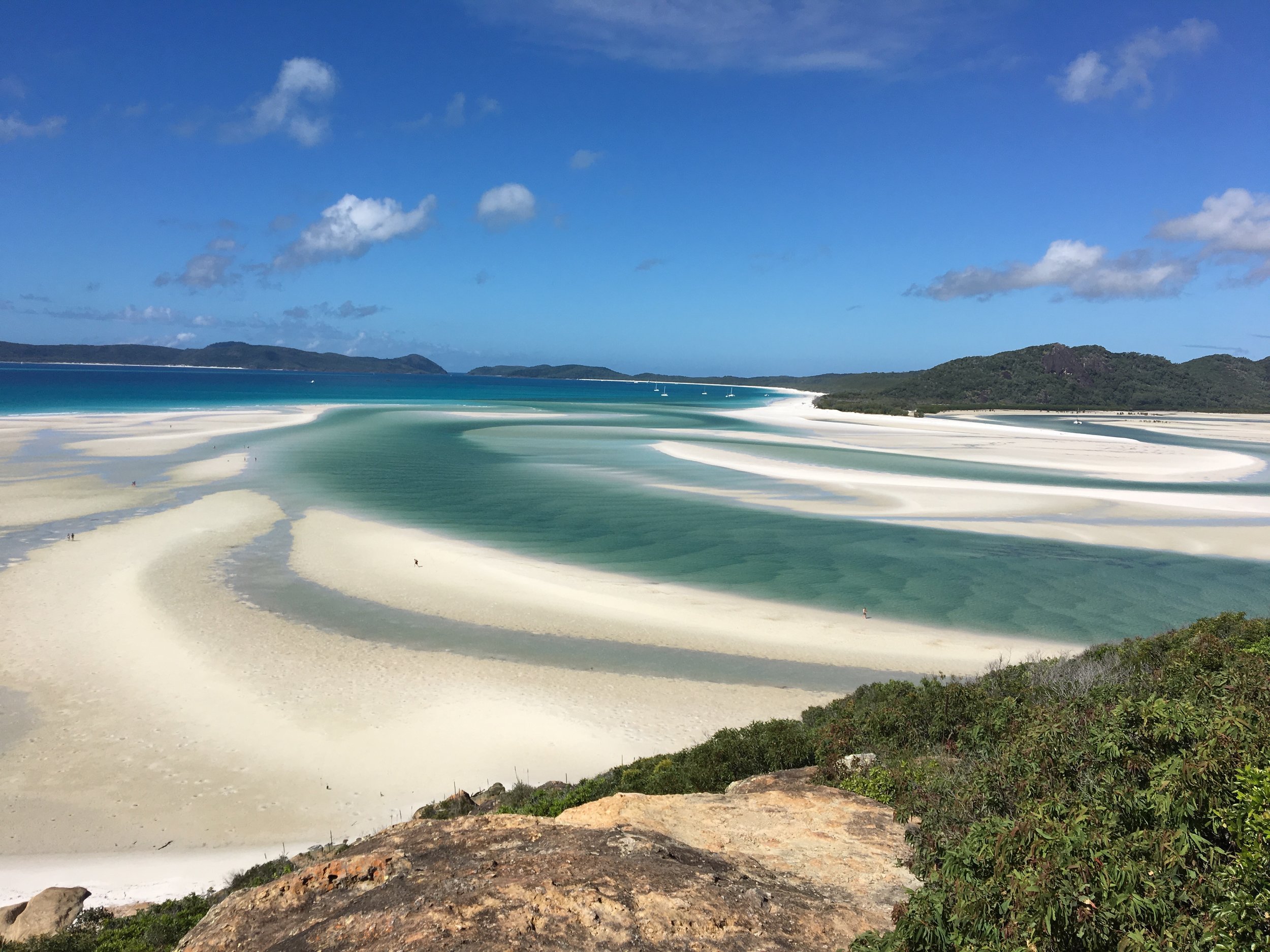
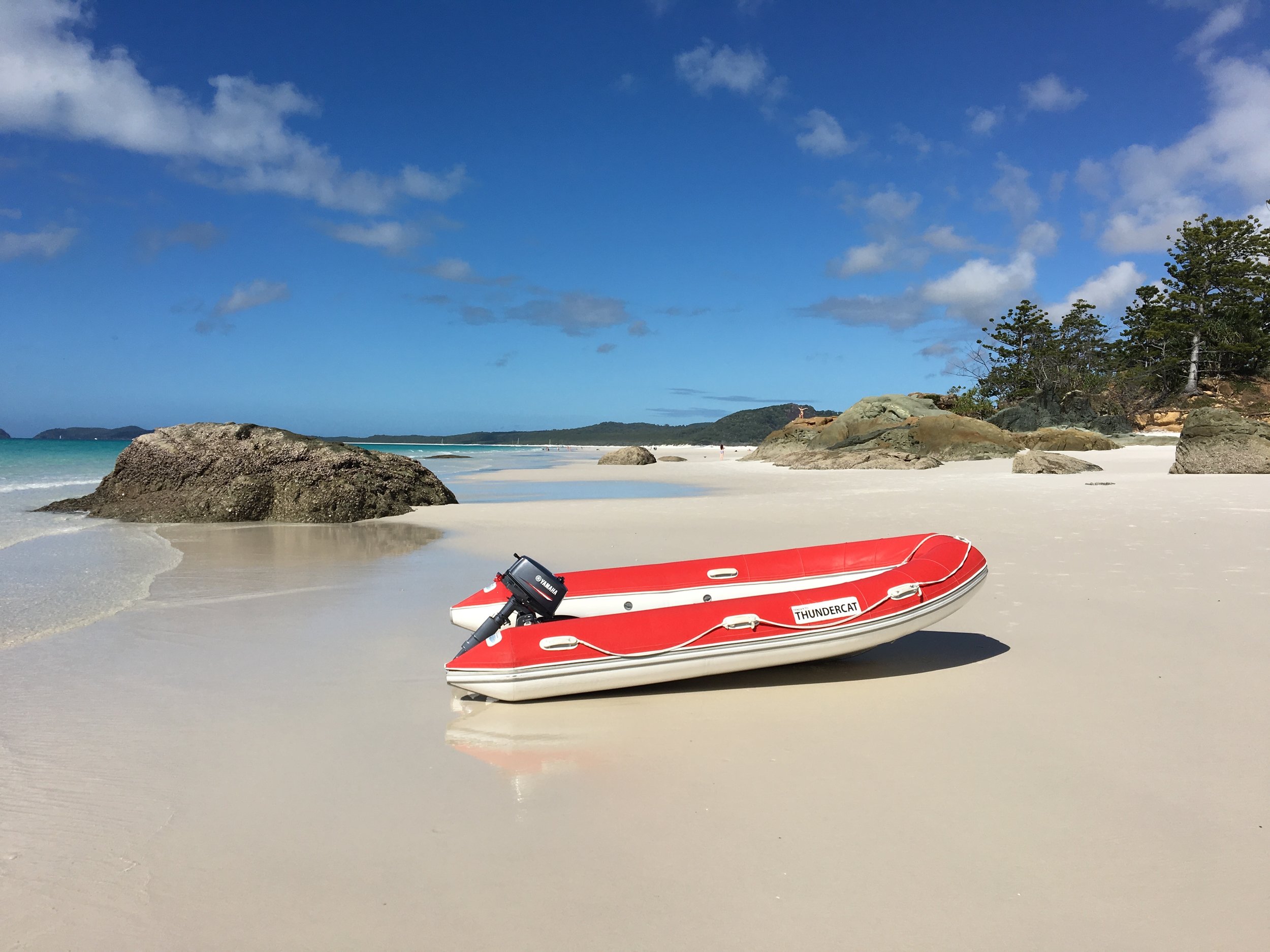
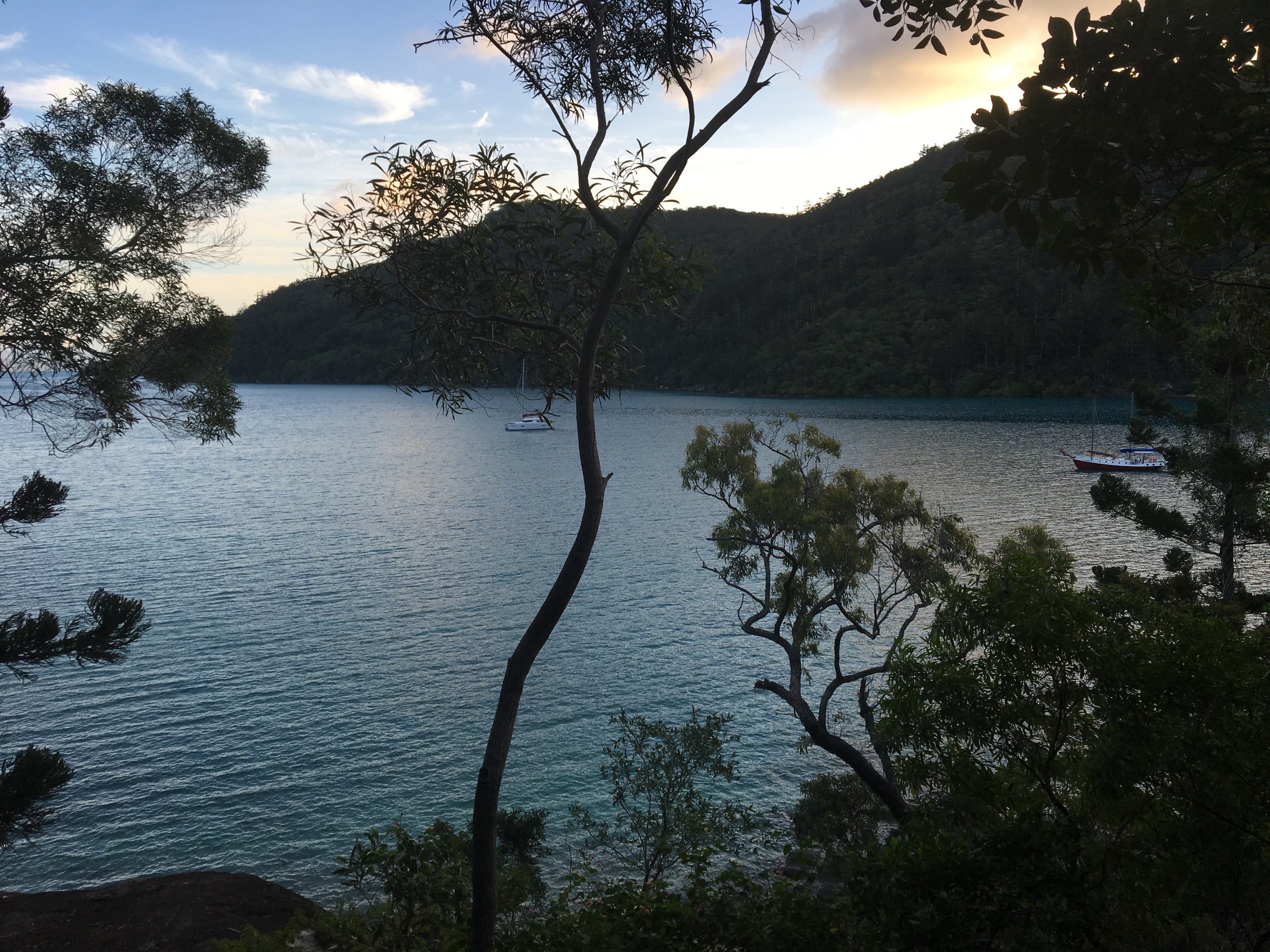
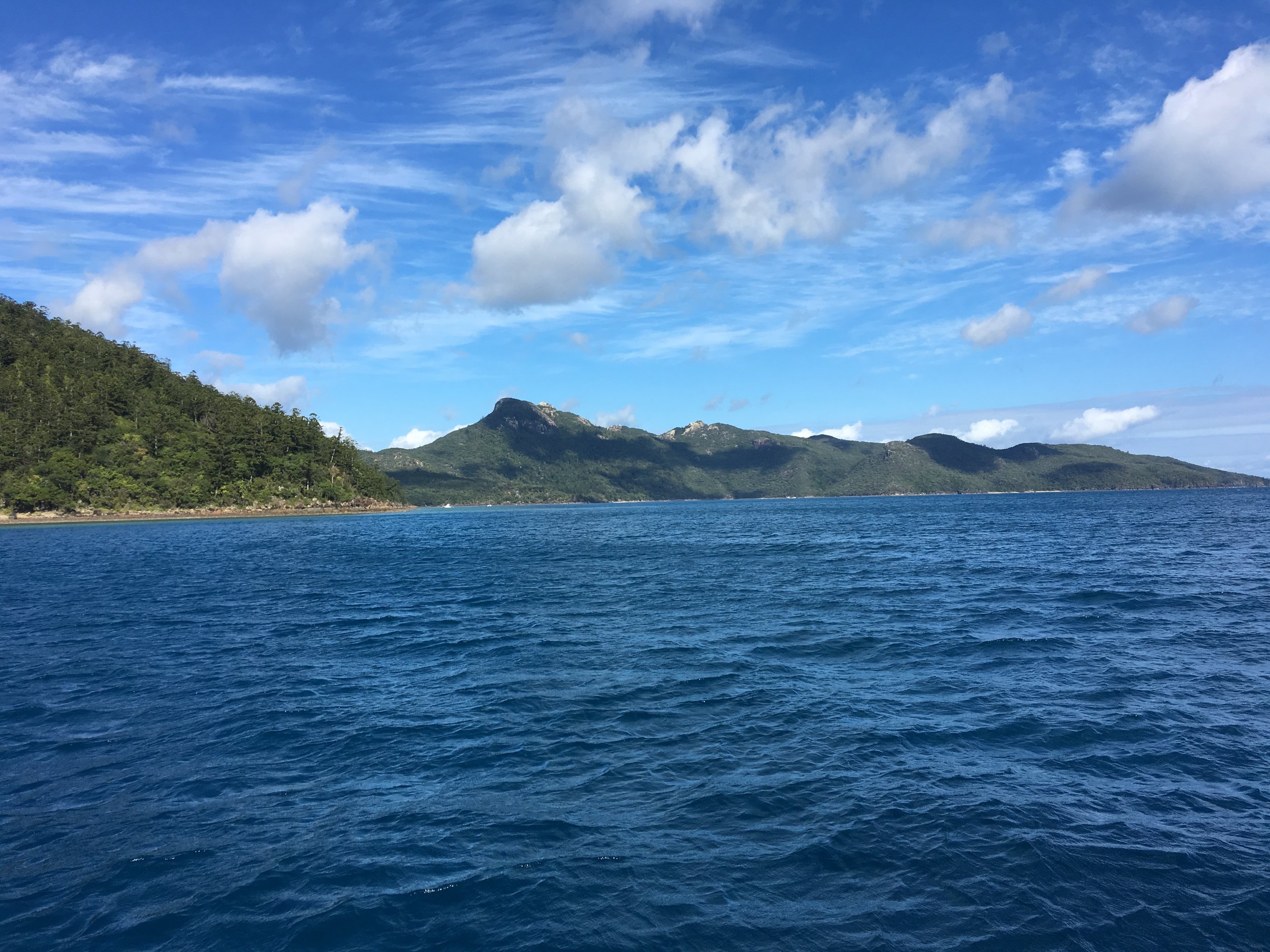

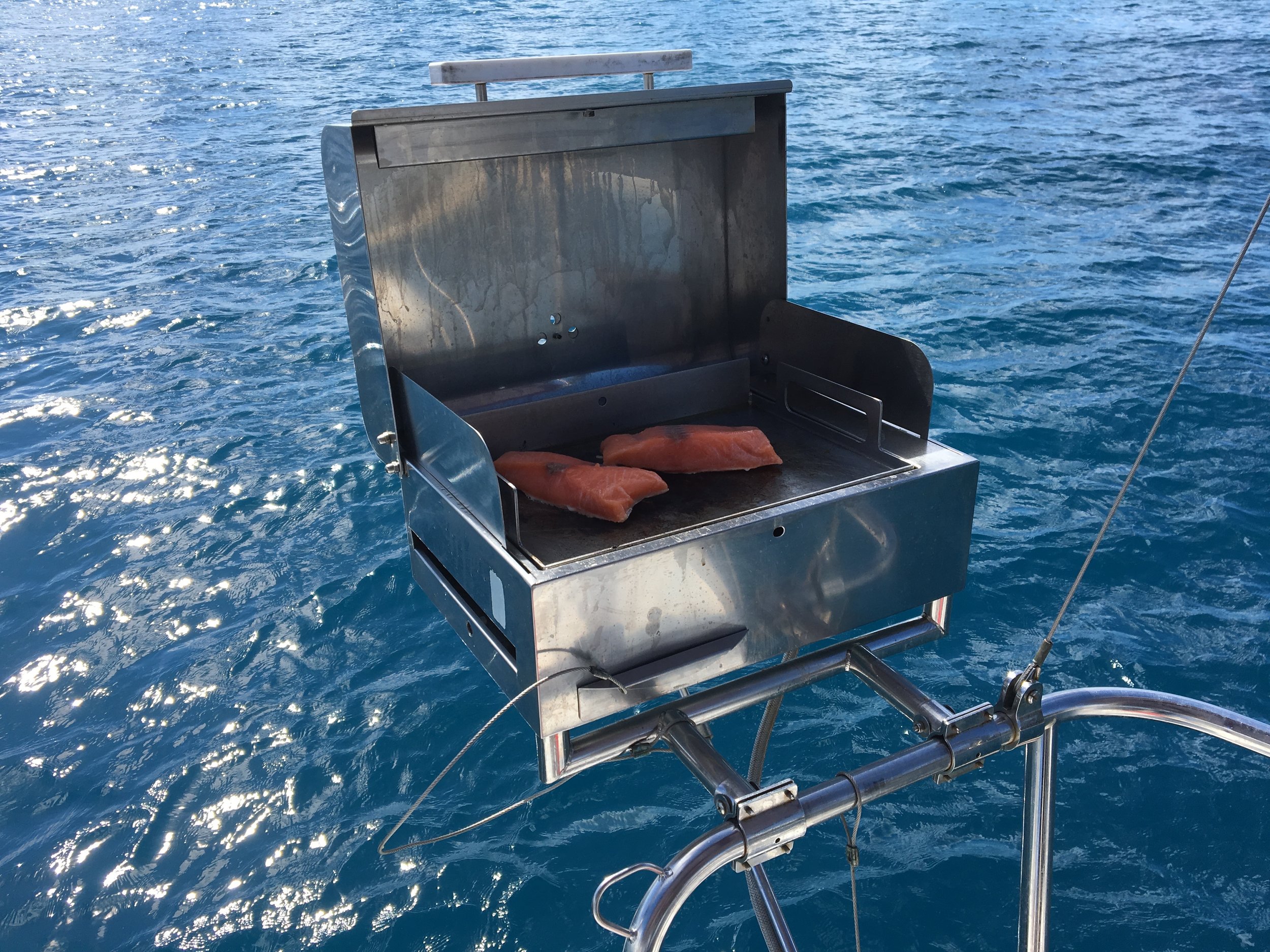
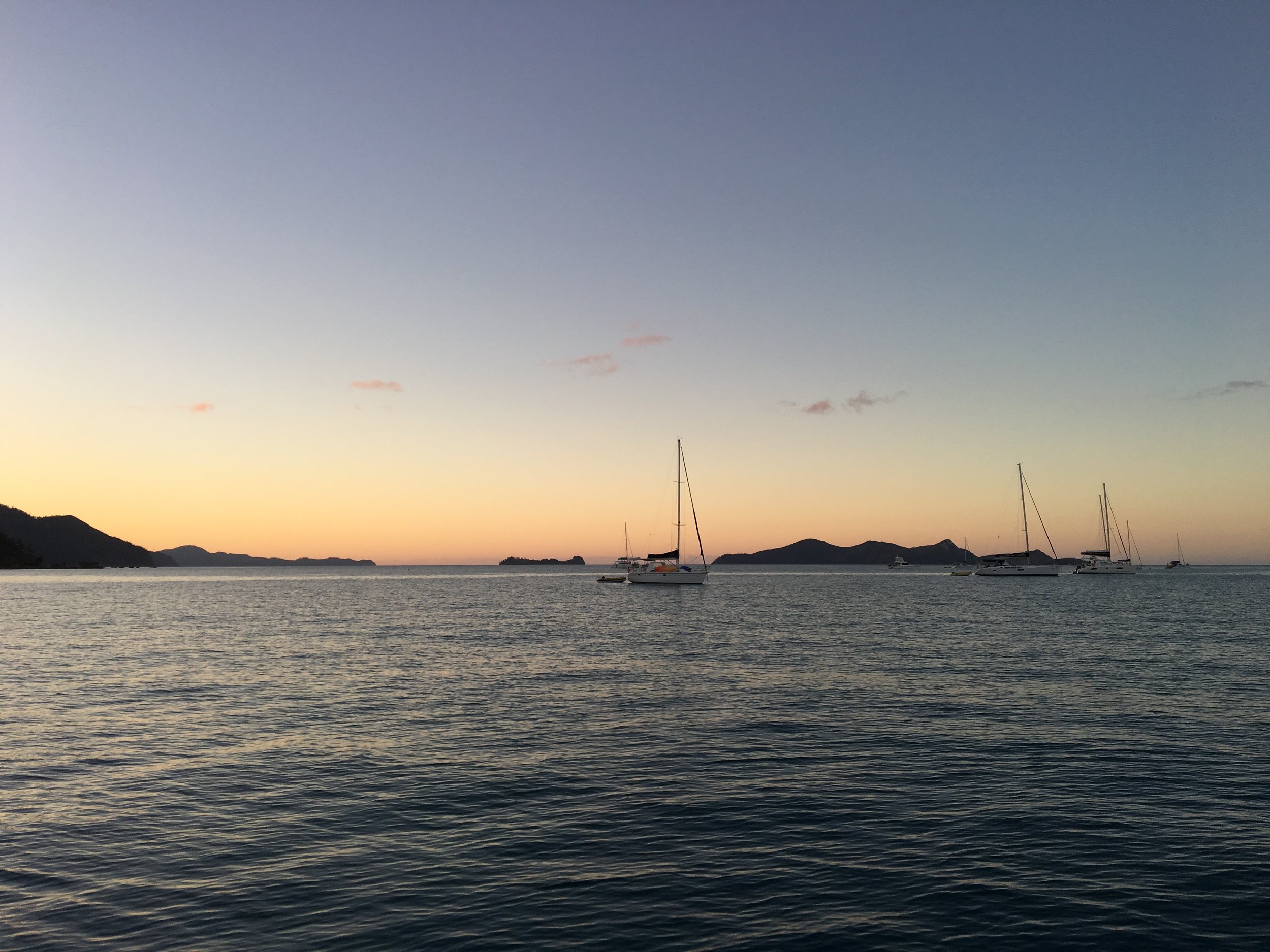
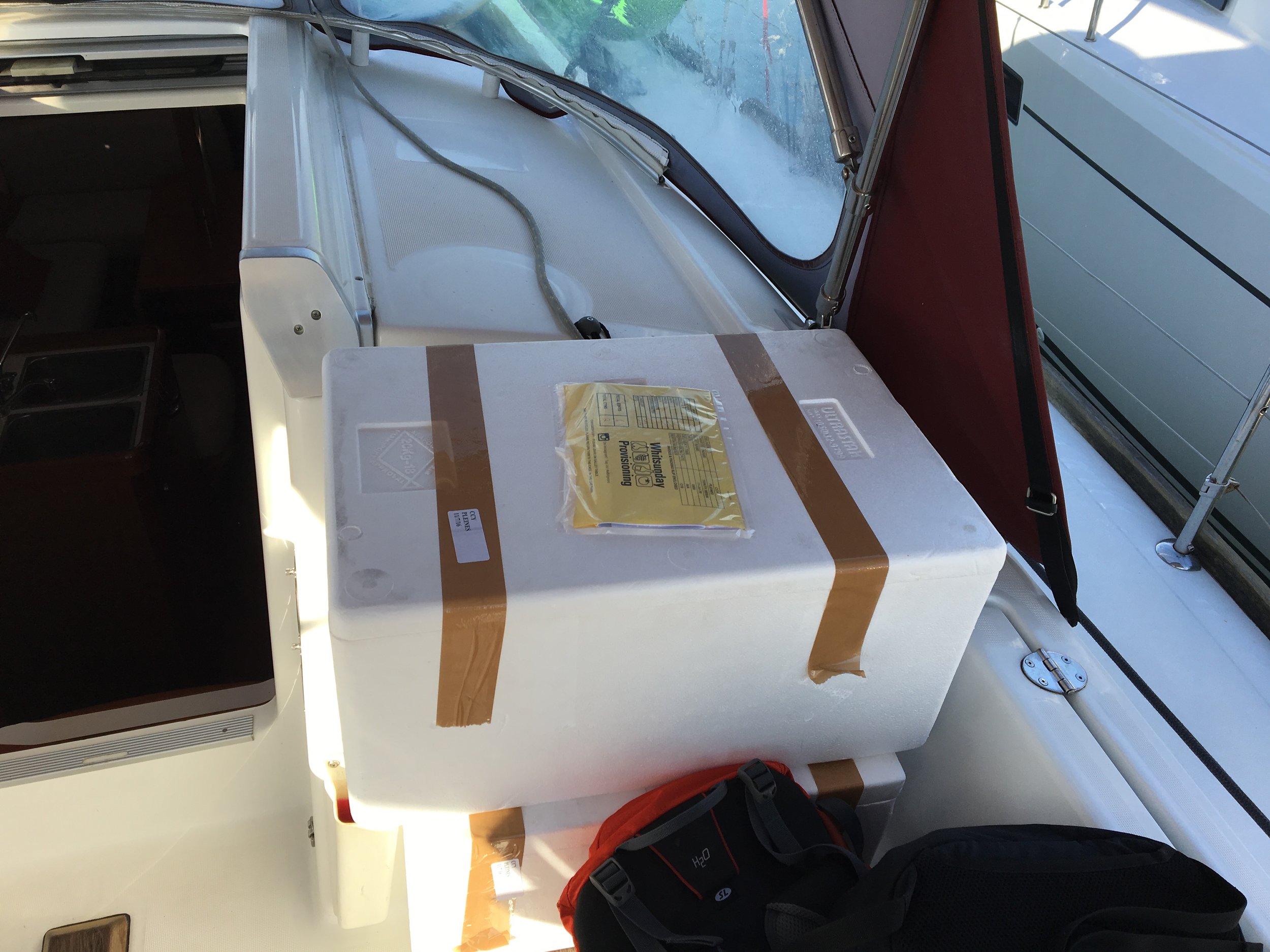
Whitsunday Map
Map tip: Download the Whitsunday map to your smartphone as an image. You can always use it offline later.
Our Whitsunday video
Introduction
Hire a boat without a sailing license - this is something that’s rarely possible anywhere else in the world – but not in Whitsundays Australia! It is best to plan 4-7 days for your Whitsundays boat trips, because you will get a briefing on the first day until at least 12-1pm and on the last day you will have to return the boat at 10 o'clock – so you will only have about 2.5 days to sail.
The Whitsundays are mostly uninhabited islands, with four of them offering everything a sailing enthusiast would need. These islands are home to the renowned Hayman Island, Hamilton Island, and Whitehaven Beach. Some of the most famous Whitsundays resorts offer exciting activities such as snorkeling, diving, taking Whitsunday boat trips, and much more. Airlie Beach is an iconic party town and it's where all of the main Whitsundays boat tours depart from. You can easily cruise Whitsundays by booking your trip in advance. The yacht operators of Whitsunday sailing tours offer scheduled 1 to 2 day cruises. Alternatively, you can charter a boat yourself and spend a few relaxing days exploring the islands.
Our 4-day tour recommendation
It is quite possible to explore Whitsunday Islands within 4 days, but that would mean a lot of sailing. However, since there are many beautiful beaches with great snorkeling and fishing opportunities to discover, we have chosen the following route, where you can sail 3-4 hours a day - depending on the wind. Most boat charterers will take you from 08:00-18:00. We were always out early so were able to leave at 08:00 am. For almost all the boats, a dinghy as well as fishing accessories, a kayak, snorkeling gear and stinger suit (protective suit against jellyfish) are included subject to booking.
Day 1: Instructions
After checking in and a detailed briefing on the boat, your boat will be ready from noon to 1pm to sail through Nara Inlet. If you want to have a quiet night, it is best to anchor in Nara Inlet’s left bay. The rest of the afternoon you can either go fishing or explore the bay with a dinghy / kayak. At the end of Nara Inlet, you can dock with the dingy and after a short climb you can see the aboriginal rock art in a cave.
Day 2: Whitehaven Beach
To capture your perfect postcard picture of Whitehaven Beach's most beautiful view, it is important to visit the observation deck at low tide because at that point the white sandy beaches are dry. You have two options to dock close to Whitehaven Beach before docking with the dingy at Whitehaven Beach. Where you choose will mainly depend on the current water level. If you want to anchor in Tongue Bay (there are also some mooring buoys here), you will have two options to get to Whitehaven Beach. At high tide you can drive to the Tongue beach and from there take the boardwalk to the viewing platform. At low tide you will not be able to reach Tongue Beach because of the reef, but you can drive around the Tongue Point with the dingy by towing it there. It is important to anchor right on the beach, between the small rocks (see our map), because this part of the beach isn’t dry. If you land directly at Whitehaven Beach, your dinghy will either sink in the water very quickly at high tide or you'll have to carry it very far into the water at low tide. This beach can also be easily reached from the opposite island called, Esk Island, where you can moor your boat to a buoy. Whitehaven Beach also has access to the boardwalk that leads to the observation deck. If you want to see the rays, you should use your underwater camera or GoPro as there will be rays in the water. Make sure you leave the water as soon as the sun sets because of the annoying sand-flies becoming active at that time.
If you are unable to find a buoy whilst you are staying in Tongue Bay, you can anchor there instead. Tongue Bay is very popular due to its proximity to Whitehaven Beach and also for overnight group stays. But after the anchor is dropped, the music usually quietens down very quickly.
Day 3: Snorkelling in Hook Island
The best snorkelling spots in the Whitsunday Islands are on the north of Hook Island. Particularly popular are the two bays, Manta Ray Bay and Luncheon Bay. The fish, including the highly popular giant blue-yellow fish (Maori wrasse) come directly to the boat hoping to be fed.
Maori Wrasse
Tip: Feed the fish with some bread so you won’t have to look for them in between the corals. If you need to leave the boat again the next day, depending on the severity of the wind and its direction, it is recommended to stay overnight either in Cid Harbour, Dugong Bay, or in Nara Inlet again.
Day 4: Return trip
On the last day, you must return to Airlie Beach as the boat should be checked in by 10:00am. Upon giving the boat back, it should be refilled with fuel as this will make the check-out process quicker and less complicated. You do not have to dispose your garbage from the boat and you’ll be back in your car within 30 minutes.
Checklist: You must take the following with you on board
- Snorkeling gear (masks, snorkels, fins)
- Underwater camera (with red light filter if necessary)
- Stinger suit
- Mosquito repellent spray against sand-flies
- Sunscreen
- Polarised sunglasses to see the coral reefs
- Food
- Swimwear
Whitsundays temperature
| Whitsunday Weather | January | April | July | October |
| Ø Maximum temperature | 31°C | 28°C | 23°C | 28°C |
| Ø Lowest temperature | 25°C | 23°C | 17°C | 21°C |
| Rainy days ( > 0,2 mm) | 13 | 14 | 5 | 5 |
| Normal rainfall | 203 mm | 115 mm | 36 mm | 16 mm |
| Average sea temperature | 27°C | 26°C | 22°C | 24°C |
Other Useful Information
- Most charter companies will allow you to rent a boat from 08: 00-16:00 as you can see the reefs in water better during the day. It's best to take polarised glasses on board so you'll be able to spot the coral reefs easier.
- A nautical chart and an electronic map with GPS above the steering panel will not only tell you where you are and which course you should take, but they will also show you how to navigate through obstacles such as coral reefs, sandbanks and their water depths at low tide.
- Every morning and afternoon, you must let the charterer know about your current position, course and anchorage through the radio.
- You will have a fridge, fresh water, food, toilet and all the related facilities on board
- BBQ: catch fish and throw it directly on the grill
- If you would like to prepare for your trip in advance, we recommend that you read the guide "100 Magic Miles". Moorings, shoals, the most beautiful snorkeling spots and all the poisonous and non-venomous species on land and water are explained in this book. In addition, instructions on how to approach the anchorages and against which wind direction and wind strength they provide sufficient protection are described in this guide. The book with a nautical map is also usually included on board the boat.
- Most people drive the boat using the motor rather than sail - That always works best when in doubt.
- Rent good boats like a Bavaria
- No experience / no license required
- Cook dinner on board or order
- Towels and bed linen are usually provided by the boat charter company and do not need to be brought by yourself
Comparing a sailboat (bareboat) with a catamaran
Why a sailboat?
- Clearly a better sailing vessel. Master sailors do not like catamarans as traditional boats sail much better.
- Have a beautiful sailing experience just from the keel alone
- If the wind comes from the same direction that you would like to sail towards, you have to cross it, otherwise you will get stuck in the wind.
- It's here that sailboats have a clear advantage over a catamaran because it can be harder for catamaran to make headway which means that you can cross the wind in smaller angles with your sailboat and thus in a shorter distance. Insert image: compare the cruising experience in a sailboat and catamaran!!
- During the trip and on the sea, the sailboat wobbles less than the catamaran as the catamaran sails with "two keels through the waves" whereas the sailboat will only sail with one.
Why sail a catamaran?
- In contrast to a sailboat, catamaran usually has no keel failure and thus a much shallow drafts. This allows you to sail in shallower waters, especially when anchoring.
- On a catamaran you have significantly more space compared to a sailboat.
- When anchoring, the catamaran is much quieter on the water because of its two hulls. The sailboat wobbles significantly more during anchoring and tides.
- The catamaran does not bend as much as a sailboat. When sailing a boat, the equipment on board must therefore be stowed accordingly. The strong lateral slope of sailing boats may also be perceived as inconvenient.
FAQs
When is the best time of the year to visit Whitsunday coast?
September offers mild water temperatures so if you’re not keen on cooler waters, it’s best to visit by the end of the month. This is the time for enjoying blue skies as you’ll be able to make the most of the Whitsundays weather and the islands' scenery.
Do I really not need a permit to charter a sailing yacht?
Yes, it is amazing that in Germany it will take 3 months to get a sailing license but you can get the most essential one here within a day. The most important rules according to the charterer: "everyone has right of way" or "if you face any problems, just take down the sails and drive with the engine". Although you have to fill out a questionnaire asking if you have sailed or chartered a yacht before, the goal is to send everyone to sea. If you would like to book a half or full-day sailing instructor for guidance, this will be recommended depending on your experience. You cannot take the sailboat outside the Whitsunday Islands either. If you have any problems or doubts, just contact the charterer, who will come to you and drive the boat back. Furthermore, you have to contact the charterer twice a day by radio.
Do I always have to anchor or are there buoys to moor the boat?
There are buoys around the islands, but you can only spend 2 hours on them. After 4:00 pm there is no time limit and you can stay overnight. This means you can anchor at a buoy at 2:00 pm and officially have 2 hours to stay there until 4:00 pm or even overnight. This buoy will be yours until 10:00 am the next morning. You can always anchor at the designated anchorages. Important: when anchoring, use enough chain and pay attention to the water depth and the resonant circuit of the boat so you do not collide with other boats.
Can I fish?
Yes, you can go fishing and your charter company will give you all the fishing gear you need. You can buy the fish bait in the harbour. In most places fishing is allowed, but some are in special nature conservation area so fishing is prohibited. Your charter company will show you the most suitable places for fishing.
Are there any deadly jellyfish in Whitesundays? Can we swim there?
Jellyfish (Box Jellyfish or Marina Stingers) are around from October to April. Coming in contact with such jellyfish is often described as deadly, but that's only half the truth. It depends on how much the jellyfish touches your body with their tentacles. For example, if it strokes you completely over the entire abdomen area or the entire back, it can be fatal. To prevent this, there are so-called stinger suits (a lightweight full body swimsuit) that protects you from their tentacles. The remaining parts of the body, such as the hands and feet can be protected with an extra layer of sunscreen. When snorkelling, always watch out for jellyfish. If you are slightly touched by the tentacles of a jellyfish, it will burn a bit, but it won't kill you. It is best to treat the affected area with vinegar as this stops the reaction. Most of the time, there are 2 bottles of vinegar on board, one of which we recommend to put in the dinghy as you will go snorkelling with it.
What will I see on my Whitsundays snorkeling adventure?
There are lots of fish and corals, of course, but also turtles, stingrays, reef sharks, blue-yellow fish (Maori wrasse), and Nemos. If you're lucky, you might also see a manatee. The coral reefs are mostly lively and colourful.
Are there any poisonous fish and sharks?
Yes, just like everywhere else in Australia, there are also some poisonous fish here, such as the "Cone Snail / Shell" (Conus geographus), which looks very pretty but has a deadly cone. However, you won't need to worry if you are just snorkelling as an observer. You can snorkel carefree as long as you do not touch the fish and corals, as they usually only become dangerous if they feel threatened. There are also smaller reef sharks but you do not have to be afraid because they are harmless and rather afraid of you. If you want to know more, we recommend the guidebook "100 Magic Miles", in which you will find an overview of all the fish with pictures and descriptions.
Can I anchor my boat on secluded beaches?
Yes, it is possible. You can anchor almost anywhere. Since your boat needs a certain amount of water to stay afloat, you can anchor near the beach you want to visit. For almost all the boats, you will get a dinghy (an inflatable boat with an external engine), to sail from your anchored boat to the beach. The dinghy can be pulled to the beach. It is important to keep in mind the high or low tide, as you have to pull the dinghy out very far when the water level drops otherwise it will be end up in the water later when you return. For safety, it is best to anchor your dinghy.
What do I eat during my multi-day sailing trip and can I cook on board?
Food including drinks and alcohol can be ordered online and will be delivered directly to the boat. Once you get your food delivered, all you have to do is put it in the fridge (generous portions will be delivered). Don't forget to bring your swimming trunks. Alternatively, you can of course go to a supermarket and bring your own food. You do not have to restrict yourself, because there is everything on board including a fridge, 2 gas hobs, oven, pots, toaster, coffee machine, cutlery, and dishes. There is also an on-deck gas BBQ on which you can barbecue your fish or steaks. However, fresh meat and fish should not be refrigerated for more than 2-3 days. So you should use them up first or catch your own fish and prepare it on the grill.
Is there any fresh water on the boat?
The boat is equipped with a water tank that holds fresh water for 2-3 days and can be used for rinsing and showering. As for drinking water, cooking, or making coffee / tea, however, we recommend that you buy a 10-20 litre water canister from the supermarket. The water quality in the tank is dependent on the tank and how long the water has been sitting in it. In order to save the fresh water tank, you can flush the toilet using seawater. There is also hot water, which is usually heated by the engine and stays warm for 24 hours. The toilet sewage pumps directly into the sea. In some, especially nature protected areas, it is forbidden to drain the wastewater directly into the sea. Therefore, boats usually have a so-called "holding tank" in which the water is stored temporarily until it can be drained back in the sea.
Is there a power outlet on board? Can I charge my phone?
Yes, there are ordinary power outlets on board that run on a battery, so you can charge your phone or other devices and even use a TV. It is always important to run the engine to charge the battery.
Where do I sleep and how many people will fit on the boat?
You can spend the night in the boat's cabin. The maximum number of people depends on the size of the chartered boat.
Is there a bathroom and a toilet?
Yes there is a bathroom with a toilet and shower on board.
What do I do if I face any problems?
There is a radio on board that gives instructions from the charter company so you can always get help. If you have problems with sailing, you can always down the sails and just drive with the boat's engine. You will have enough fuel as one tank is full enough for about 60 hours of engine running time. If you drive the boat 4 hours a day, it will last for more than two weeks.
What if there is no wind?
If there is no wind, you can take down the sails and drive with the engine instead. Your fuel tank is very big and lasts over 2 weeks with 4 hours of engine use per day.
Do I have to pay attention to the ebb and flow?
You will get a tide book from the charter company, which informs you about the ebb and flow of water including the water level and time. This information is relevant because low and high tides can cause strong currents and prevent landing with the dingy. For example, if you want to visit Whitehaven Beach via Tongue Bay, you can only land with the dinghy at high tide over the offshore reef.
Where are the Whitsunday Islands located?
Whitsunday Islands are situated in the central part of Queensland’s Great Barrier Reef in Australia. This group of islands' commercial centre is Hamilton Island.
Is Hamilton Island worth a visit?
Hamilton Island is a largely developed region and offers many things to see and do. You can enjoy many water sports plus a range of shopping options and restaurants on this popular island. There are also quieter spots that allow you to relax and absorb the beautiful scenery.
How far is Whitsunday from Brisbane and Cairns?
Whitsunday Islands are situated 1120km north of Brisbane and 630km south of Cairns.
How to reach Whitsunday Islands?
The easiest way is to go from the town of Airlie Beach as you will be able to take the Whitsunday sailing tours from there. There are also scheduled Airlie Beach cruises that you can take advantage of.
Where to stay in Whitsunday?
There are plenty of luxury Whitsundays hotels, but to save money, the best type of Whitsunday Islands accommodation is a boat charter.
Is there any budget-friendly Whitsundays accommodation available?
Yes. You can find affordable rooms and budget cabins in Airlie Beach.
How to get to Whitehaven Beach?
To visit Whitehaven Beach Whitsundays, you must take a short boat ride or seaplane. With a little planning, you can easily make it to Whitehaven’s northern or southern ends as well as the rest of the beach.
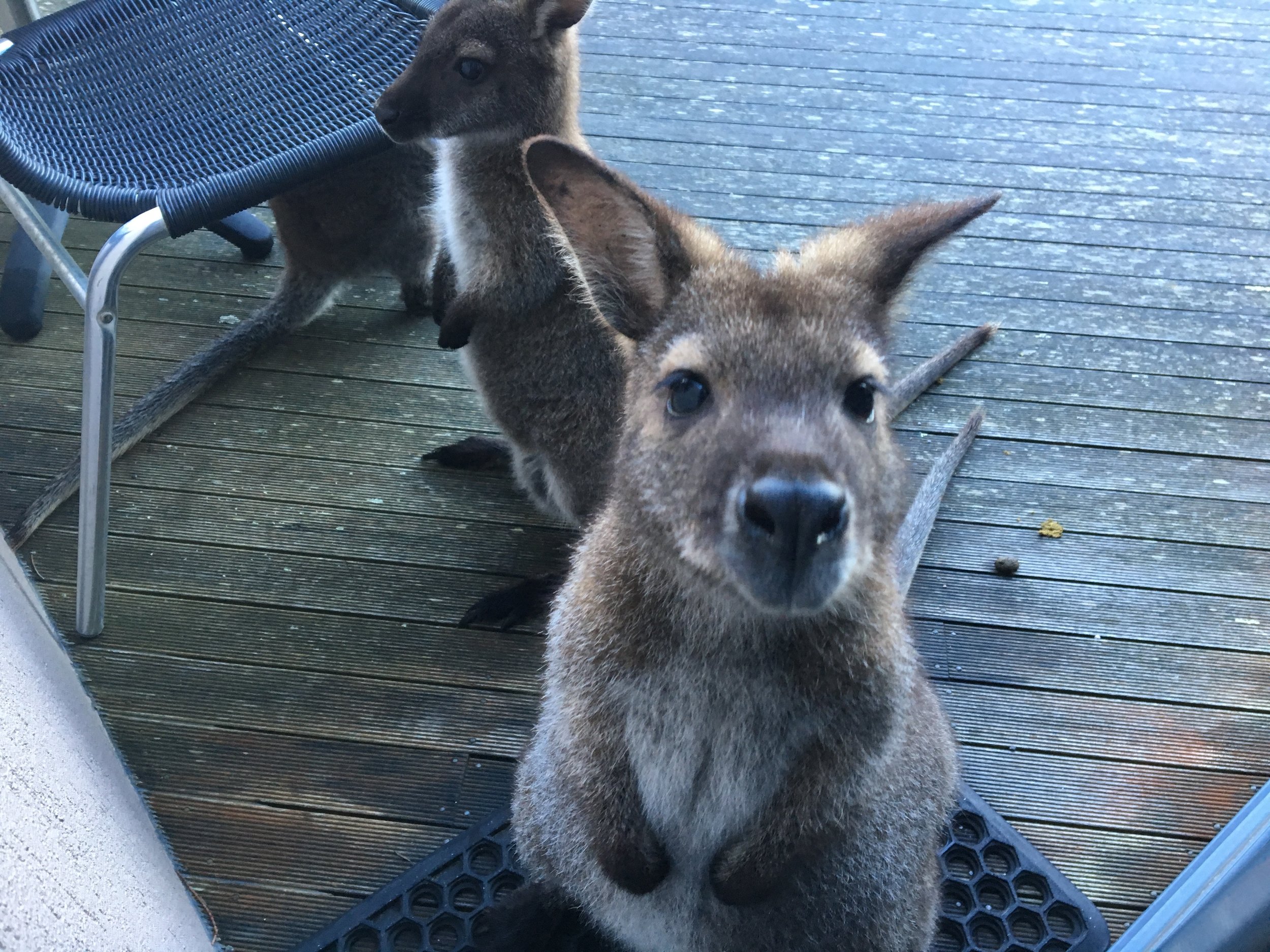
Tasmania travel guide






